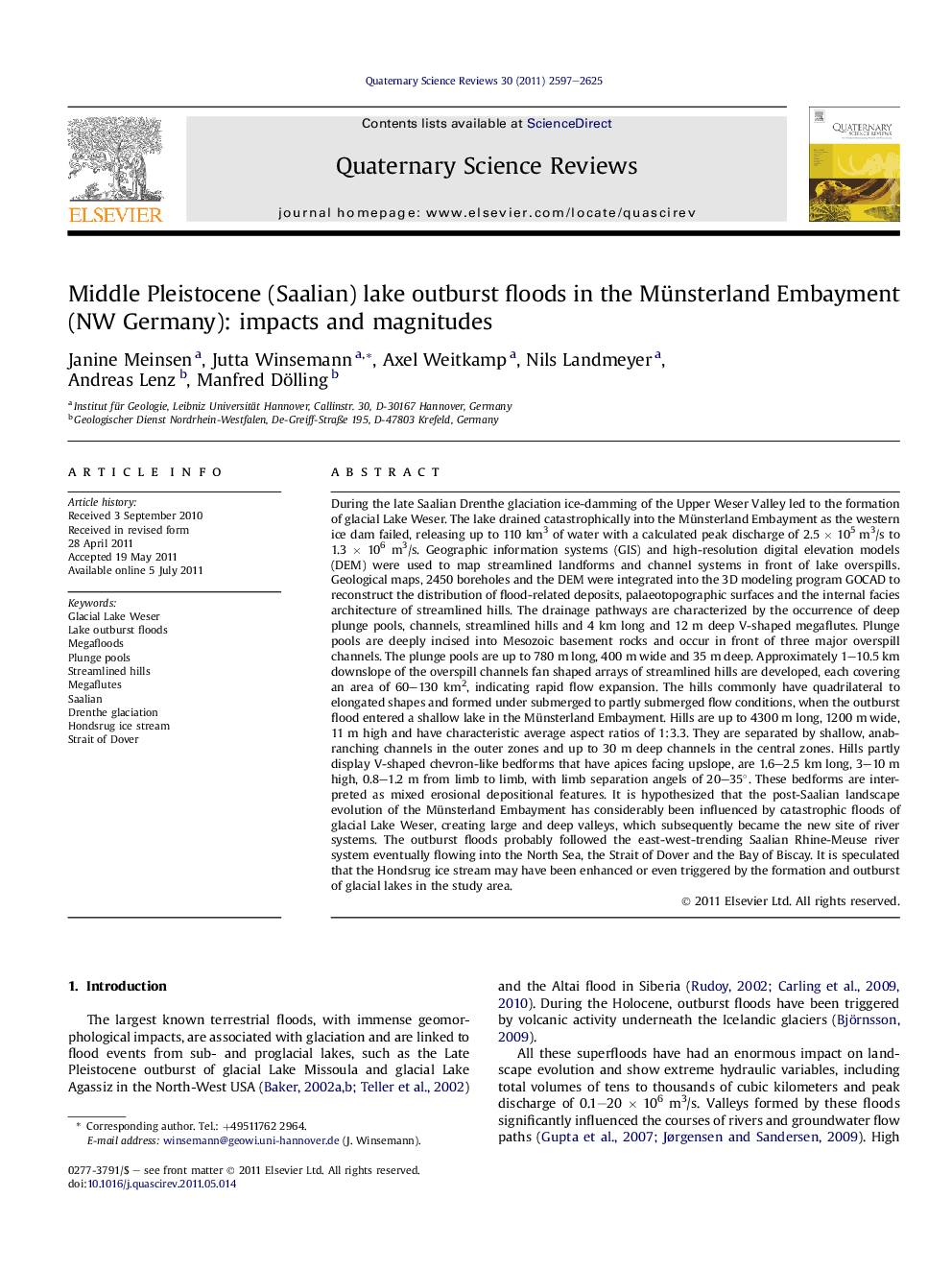| Article ID | Journal | Published Year | Pages | File Type |
|---|---|---|---|---|
| 4736718 | Quaternary Science Reviews | 2011 | 29 Pages |
During the late Saalian Drenthe glaciation ice-damming of the Upper Weser Valley led to the formation of glacial Lake Weser. The lake drained catastrophically into the Münsterland Embayment as the western ice dam failed, releasing up to 110 km3 of water with a calculated peak discharge of 2.5 × 105 m3/s to 1.3 × 106 m3/s. Geographic information systems (GIS) and high-resolution digital elevation models (DEM) were used to map streamlined landforms and channel systems in front of lake overspills. Geological maps, 2450 boreholes and the DEM were integrated into the 3D modeling program GOCAD to reconstruct the distribution of flood-related deposits, palaeotopographic surfaces and the internal facies architecture of streamlined hills. The drainage pathways are characterized by the occurrence of deep plunge pools, channels, streamlined hills and 4 km long and 12 m deep V-shaped megaflutes. Plunge pools are deeply incised into Mesozoic basement rocks and occur in front of three major overspill channels. The plunge pools are up to 780 m long, 400 m wide and 35 m deep. Approximately 1–10.5 km downslope of the overspill channels fan shaped arrays of streamlined hills are developed, each covering an area of 60–130 km2, indicating rapid flow expansion. The hills commonly have quadrilateral to elongated shapes and formed under submerged to partly submerged flow conditions, when the outburst flood entered a shallow lake in the Münsterland Embayment. Hills are up to 4300 m long, 1200 m wide, 11 m high and have characteristic average aspect ratios of 1:3.3. They are separated by shallow, anabranching channels in the outer zones and up to 30 m deep channels in the central zones. Hills partly display V-shaped chevron-like bedforms that have apices facing upslope, are 1.6–2.5 km long, 3–10 m high, 0.8–1.2 m from limb to limb, with limb separation angels of 20–35°. These bedforms are interpreted as mixed erosional depositional features. It is hypothesized that the post-Saalian landscape evolution of the Münsterland Embayment has considerably been influenced by catastrophic floods of glacial Lake Weser, creating large and deep valleys, which subsequently became the new site of river systems. The outburst floods probably followed the east-west-trending Saalian Rhine-Meuse river system eventually flowing into the North Sea, the Strait of Dover and the Bay of Biscay. It is speculated that the Hondsrug ice stream may have been enhanced or even triggered by the formation and outburst of glacial lakes in the study area.
► Impacts of Middle Pleistocene lake outburst floods on landscape evolution. ► Calculation of outburst flood peak discharge. ► Streamlined hills, plunge pools and deep channels indicate the drainage pathway. ► Reconstruction of flood-related paleosurfaces by means of 3D subsurface modeling (GOCAD). ► The possible outburst pathway into the North Sea and English Channel is discussed.
